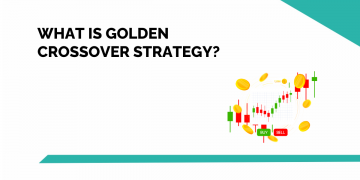Ever since the beginning of the technical analysis, trend following has been an important method of entering and exiting trades.
Also Read: A complete overview on trend and theory of retracement
But remember, it is not market timing I am talking about.
Market timing involves guessing tops and bottoms.
A trend follower cannot or will not get in at the bottom or the out at the top.
It depends on how quickly he or she can identify that the market trends have changed so that he/she can go long after a bottom or exit after a top.
Want to learn technical analysis from scratch? Join: NSE Academy Certified Technical Analysis course on Elearnmarkets.
So why do markets trend?
One cannot be sure of that.
There have been many studies of human emotion and behavior to understand why traders and investors take their decisions.
These decisions which are often emotional can be biased, irrational or downright superstitious.
Hence, like all markets, for example of used cars, grocery or industrial products, the economic principle of supply and demand determining the price of a product applies to trade too.
Each buyer (demand) in the stock market bids for the stock for a certain quantity at a certain price.
Each seller (supply) offers to sell or ask the price of the product at a certain quantity.
Know More: Are You Aware Of The Relationship Between Demand And Supply
When the buyer and the seller have a mutual agreement for the certain stock at a certain quantity at a certain price, they have a transaction and they establish a price for that particular period of time.
 The reason why the transaction takes place can be many.
The reason why the transaction takes place can be many.
When we buy a stock, we buy it with the expectations that the stock price will rise in the future.
This gives us hope that we will sell it at a higher price later.
But, this can also prove that we are the bigger fool in the game.
Someone had to sell the stock so you could make the purchase.
This other person might have an opposite view about the stock.
Though this can be true in reality, you might have no idea why the stock was sold to us or who sold it.
Maybe they already had a nice gain with the stock and decided to sell it after they felt that the rally was diminishing.
Bottomline:
The bottom line is that there is a continuous auction process going on in the market and buyer and seller transact amongst themselves which affects the price of the shares
This leads to market trends.
It is a zero-sum game.
So, a proper way to describe an up market is that there is more buying enthusiasm (demand) than selling enthusiasm (supply).
Hence, there are up trends in the market when the buyers feel that they have to bid more for the stocks they want to buy and sellers can ask more for the stocks to sell.
This can continue until the supply and demand of the particular stock come to equilibrium.
Technical analysis is the study of this demand and supply.
Through the technical charts, we can see the real-time tussle between the forces of demand and supply in the markets.
So, in conclusion, we can say that price is the most important factor which brings into action all the forces of the market which makes it a trend.
Identification of these trends helps traders and investors to enter at bottoms and exit at peaks to make the most of technical analysis.









so much superb info on here, : D.
Its like you read my mind! You appear to know so much about this, like you wrote the book in it or something. I think that you can do with a few pics to drive the message home a bit, but instead of that, this is great blog. A fantastic read. I’ll definitely be back.